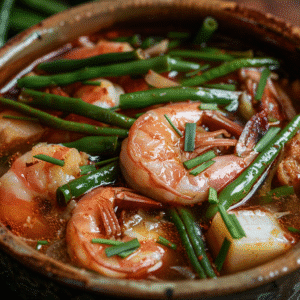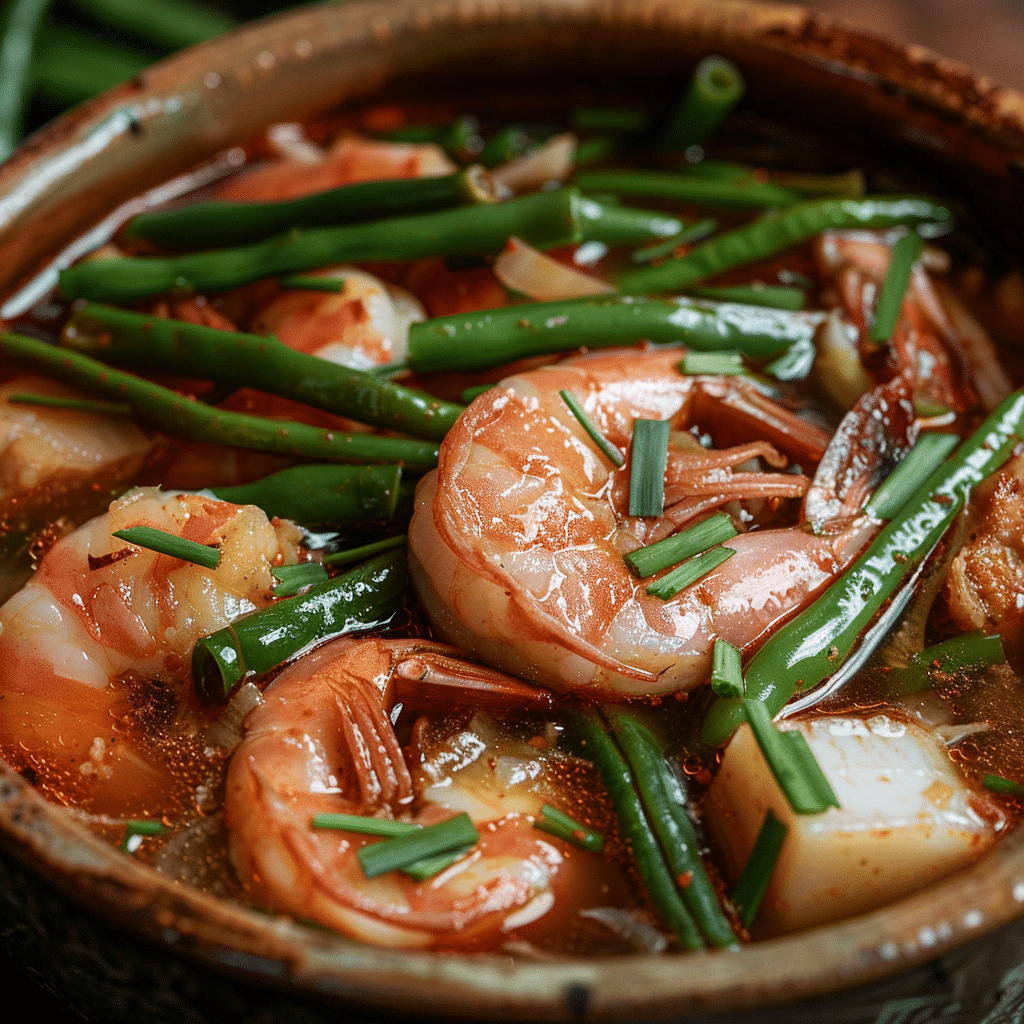
There’s something magical about how the sourness of tamarind broth wraps around plump shrimp and fresh vegetables in this Sinigang na Hipon. It’s bright, savory, and full of love a dish my lola used to make on Friday nights when meat wasn’t on the menu. This version is meat-free, gluten-free, and oh-so satisfying, especially when ladled hot over steamy rice.
Whether you’re winding down after a long day or looking for a wholesome meal that doesn’t take much effort, this shrimp Sinigang is your bowl of joy.
Table of Contents
🍚 Serving Versatility:
- With white jasmine rice (the classic)
- Ladled over garlic quinoa for a high-fiber twist
- Sipped solo like a tangy shrimp soup
- Served in a big bowl with extra greens and chili flakes for spice lovers
📝 Full Recipe: Sinigang na Hipon
Ingredients:
- 1 lb large shrimp (shell-on, heads-on if possible, cleaned)
- 6 cups water
- 1 onion, quartered
- 2 tomatoes, quartered
- 1–2 tbsp fish sauce (adjust to taste)
- 1 pack tamarind soup base (or ½ cup fresh tamarind pulp)
- 1 cup daikon radish, sliced
- 1 cup eggplant, sliced
- 1 cup sitaw (long beans) or green beans
- 2 cups kangkong (or spinach)
- 1 green chili (siling haba), optional
- Salt & pepper, to taste
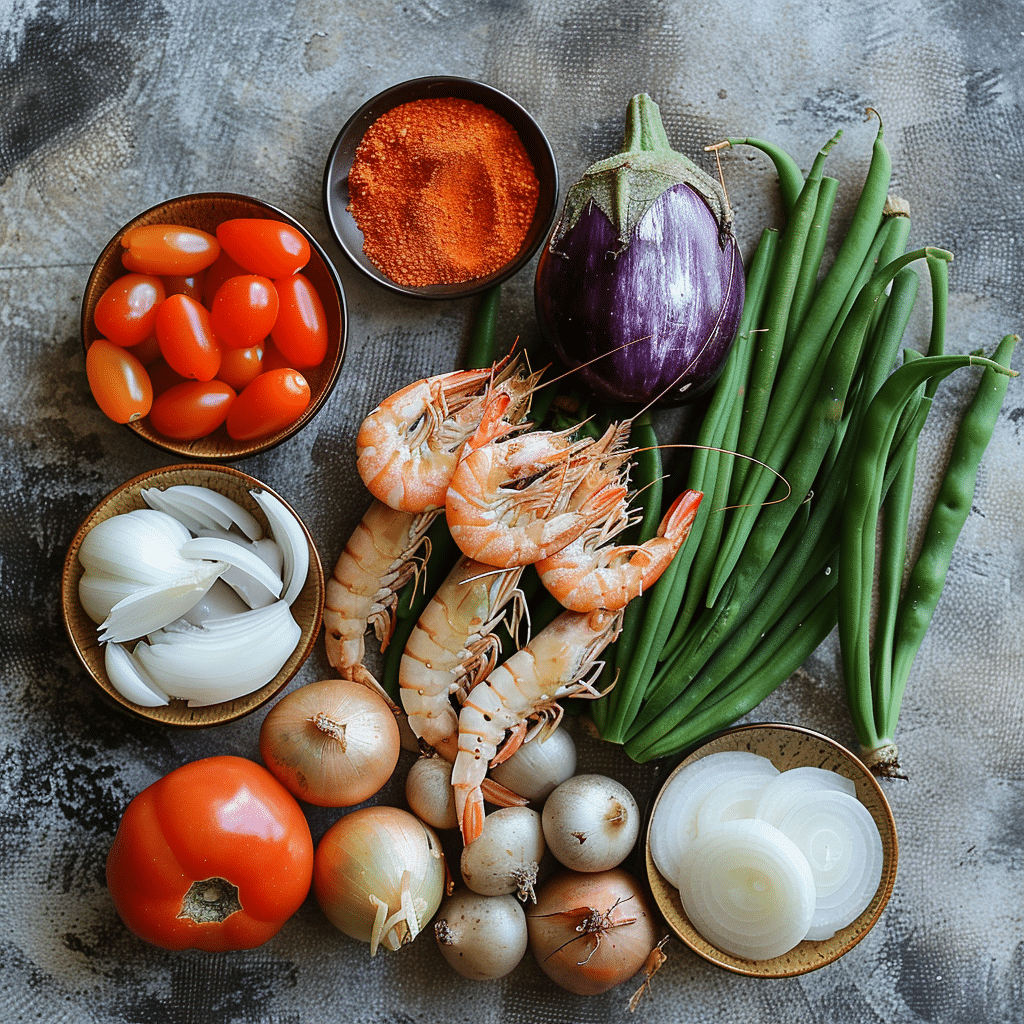
Instructions:
- In a large pot, bring water to a boil. Add onion and tomatoes. Simmer for 5 minutes to flavor the broth.
- Stir in the tamarind soup base and fish sauce.
- Add daikon radish and cook for 3–4 minutes.
- Add eggplant and green beans, simmering until just tender.
- Toss in the shrimp and green chili. Simmer for 3–5 minutes or until shrimp turn pink and are just cooked.
- Add kangkong or spinach last. Simmer 1–2 more minutes.
- Adjust seasoning with salt, pepper, or extra tamarind.
- Serve hot over rice or as is spoon and smiles ready!
Pork Sinigang (Sinigang na Baboy)
Equipment
- Large Pot or Dutch Oven
Ingredients
- 2 lb pork belly cubed
- 10 cups water
- 1 cup young tamarind broth from fresh or mix
- 1 pc onion quartered
- 2 pcs tomato quartered
- 1 cup daikon radish sliced
- 2 pcs eggplant slice diagonally
- 8 pcs okra
- 10 pcs green beans cut 2-inch
- 1 bunch water spinach (kangkong) stalks and leaves separated
- 2 pcs long green chili
- fish sauce to taste
- ground black pepper to taste
Instructions
- In a large pot, combine water and tamarind broth. Bring to a boil.
- Add onion, tomato, and pork belly. Skim scum, then simmer, covered, for 45–60 minutes, until pork is tender.
- Add daikon and eggplant; cook 5 minutes.
- Add green beans, okra, chili and remaining tomatoes; simmer 3–5 minutes.
- Add water spinach stalks, season with fish sauce and pepper; cook 2 minutes.
- Stir in leaves, turn off heat, and let sit 3 minutes before serving.
Notes
⏱️ Recipe Details:
- Prep Time: 10 minutes
- Cook Time: 20 minutes
- Total Time: 30 minutes
- Servings: 4
- Calories: Approx. 260 per serving
💛 Why You’ll Love This Recipe:
- ⏳ Quick & Easy: Ready in just 30 minutes!
- 🐟 Seafood-Lover’s Dream: Light but packed with flavor.
- 🥬 Veggie-Loaded: Radish, eggplant, greens, all in one pot.
- 🍚 Naturally Gluten-Free: No noodles, no soy sauce.
- 🔄 Customizable: Add tofu, mushrooms, or more veggies!
🇵🇭 A Taste of Tradition:
Sinigang na Hipon is a coastal cousin to the pork version. Popular in seaside towns and during the Lenten season, it’s a great example of how Filipino food adapts always keeping flavor and comfort at its heart.
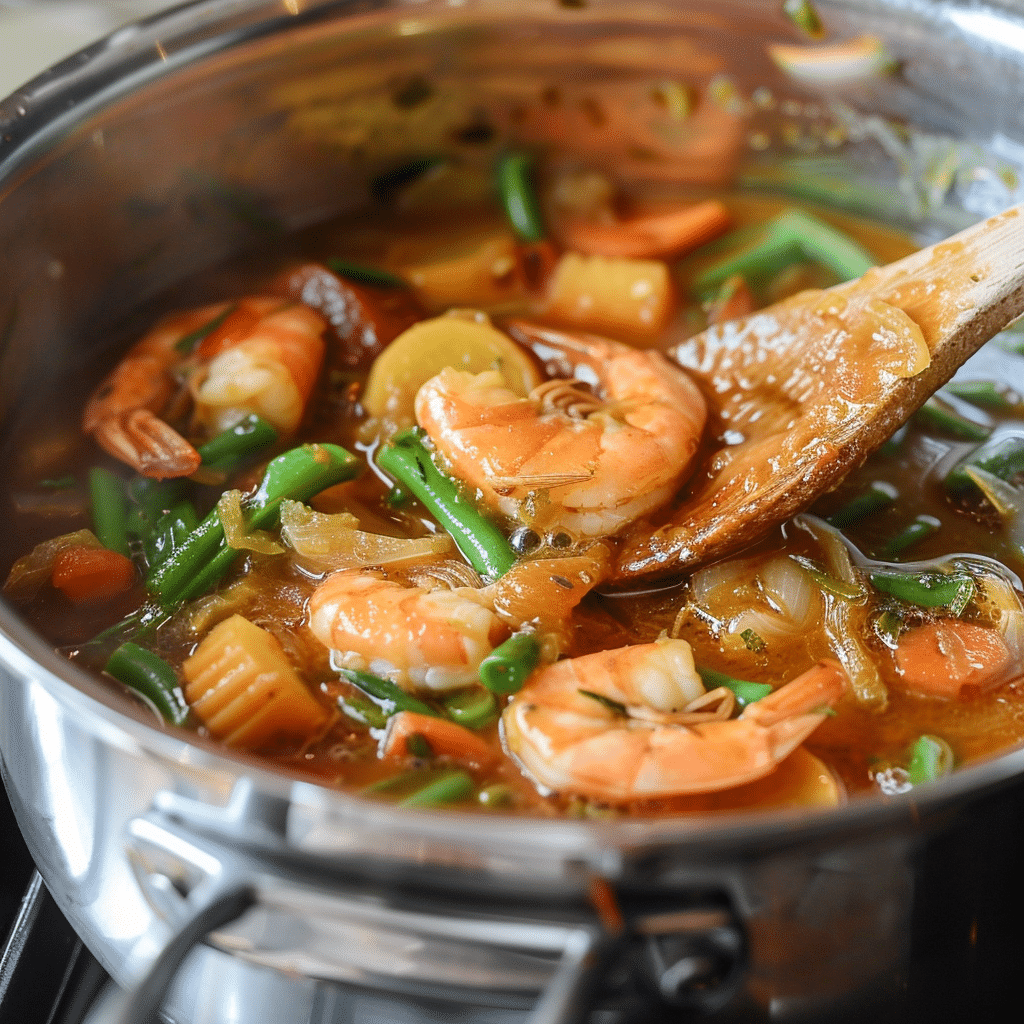
🍴 Serving Suggestions:
- Classic: Over fluffy white rice
- Healthy twist: With steamed cauliflower rice
- Cozy meal: Pair with fried tofu or lumpia on the side
- Bonus flavor: Add miso paste for Japanese-Filipino fusion!
🧑🍳 Pro Tips for Sinigang Success:
- Keep shrimp heads on for richer broth flavor.
- Don’t overcook the shrimp they cook fast!
- Add greens last to preserve their vibrant color and texture.
- Adjust sourness to your taste more tamarind = more tang!
🧊 Storage & Reheating:
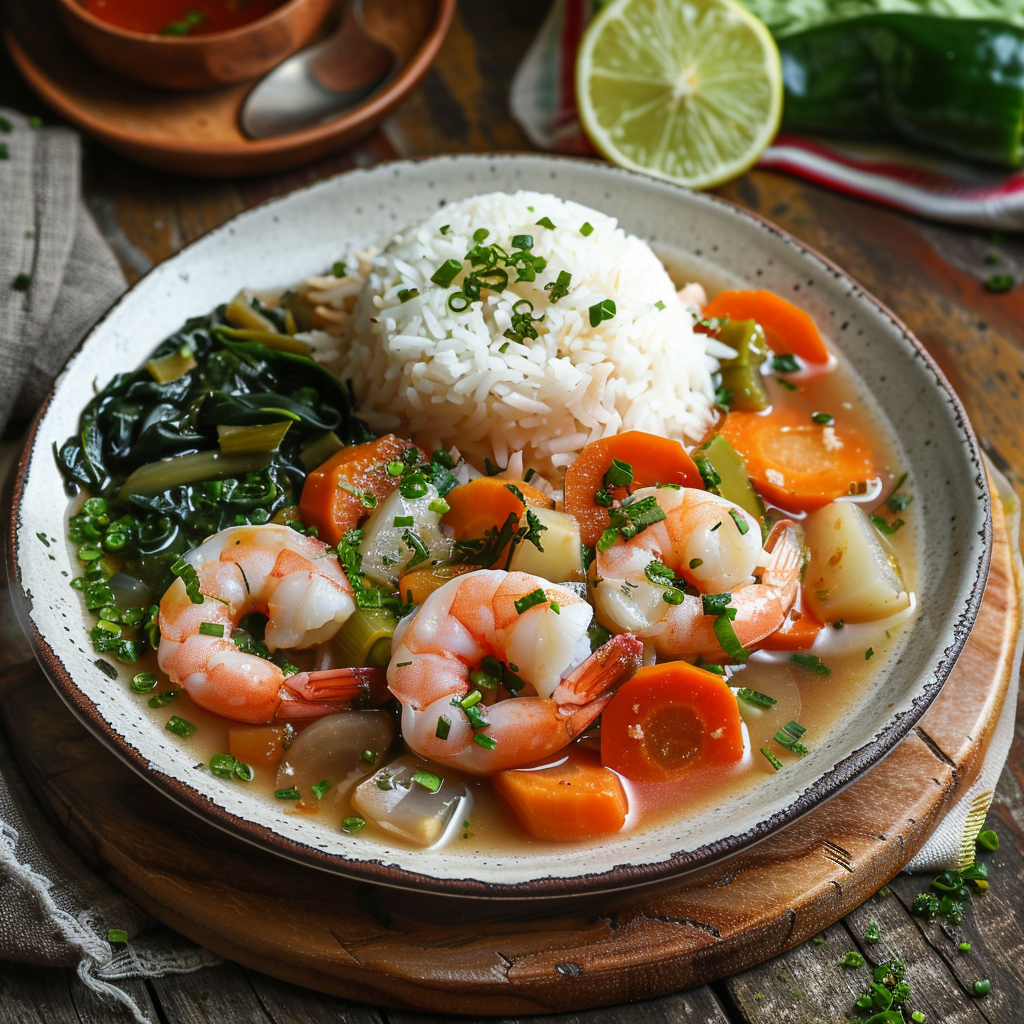
- Fridge: Store in airtight containers up to 2 days.
- Freezer: Not ideal shrimp can get rubbery. Best fresh!
- Reheat: Gently simmer in a pot; avoid microwaving shrimp too long.
Try our cozy Chicken Tinola Soup another Filipino favorite without pork!
🌟 Final Thoughts from Emma:
Sinigang na Hipon brings all the love of Filipino cooking without the heaviness. It’s bright, briny, and beautifully tangy perfect for anyone avoiding red meat or just craving something light.
💬 What’s your favorite way to enjoy Sinigang shrimp, or bangus? Tell me below!
And don’t forget to follow Spedy Recipes on Pinterest and Medium for more family-style comfort meals from my kitchen to yours.

